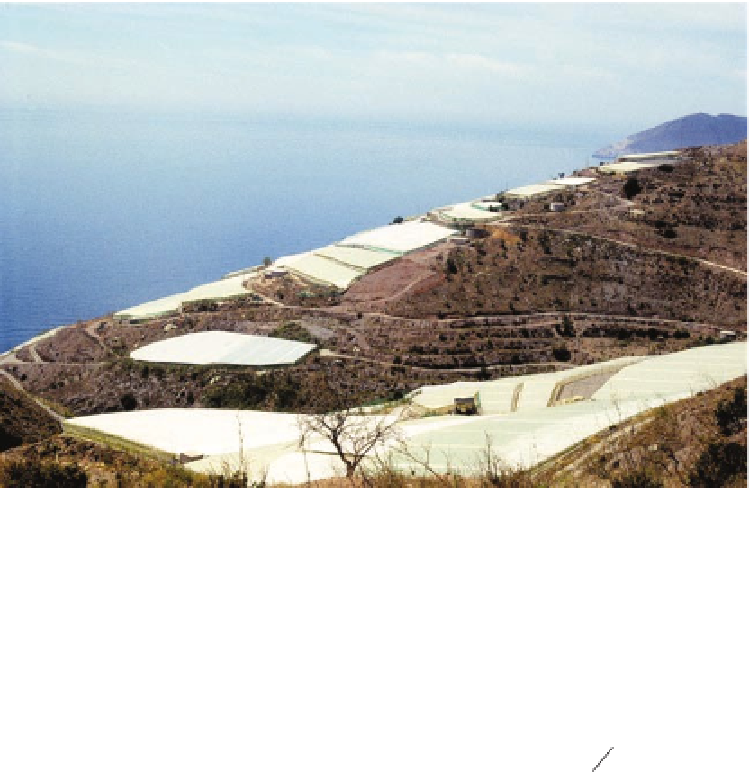Agriculture Reference
In-Depth Information
Temperature also decreases with altitude,
around 0.6°C for each 100 m of elevation
(Jones, 1983). Solar radiation increases
with altitude, decreasing the proportion of
diffuse radiation on clear days (Seeman,
1974). In general, rainfall is higher at higher
altitudes.
The topography plays a relevant role
in the local microclimate mainly due to its
influence on the wind, the rainfall, radiation
and temperature (Photo 2.1). Of special
importance are also the effects of the local
topography on radiation, because of the
shadows that may be produced, on wind
velocity and direction, and on the thermal
regime (Fig. 2.18).
2.12
Summary
•
The local climate is a determinant
for the greenhouse microclimate and
its future management; therefore it
must be evaluated, with the aim of
choosing the right location for siting
the greenhouse.
In the context of a greenhouse, the avail-
•
able solar radiation and its qualitative
Photo 2.1.
On the coast of Granada (Spain), greenhouses are located on the slopes and oriented to the
south to benefit from better conditions of radiation in autumn and winter.
Solar rays
Soil profile
Sunny area
Shaded area
Shadow
Horizontal line
Fig. 2.18.
In the northern hemisphere, the slopes oriented to the south receive much more radiation than
those oriented to the north, especially in winter when the solar elevation is lower. If the slopes are very
inclined, the shadows can also be important.


























